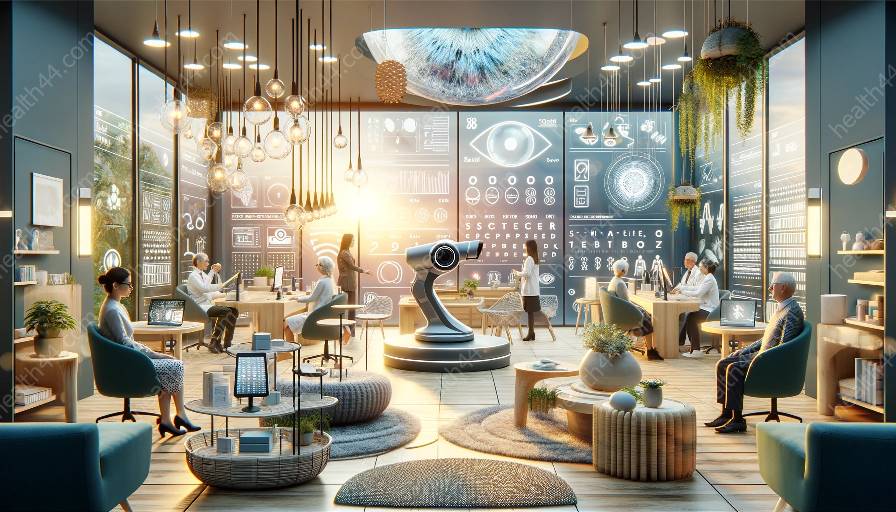Assistive technology plays a crucial role in enhancing the reading and writing experiences of individuals with vision impairment. By providing innovative solutions, assistive technology empowers users to overcome barriers and achieve academic and professional success. When considering assistive technology for reading and writing, there are several key features to look for to ensure compatibility with vision rehabilitation and maximize its effectiveness.
1. Accessibility Features
Assistive technology for reading and writing should offer a range of accessibility features to accommodate diverse needs. This includes adjustable font sizes, customizable color contrast options, speech-to-text and text-to-speech capabilities, and compatibility with screen readers. These features are essential for individuals with vision impairment, as they enable easy access to digital content and facilitate seamless comprehension and production of written materials.
2. Multi-Modal Support
Effective assistive technology should offer multi-modal support, allowing users to engage with digital content through different sensory channels. For example, solutions that incorporate braille displays or tactile feedback enable individuals with vision impairment to read and write with enhanced tactile sensitivity and accuracy. Similarly, audio feedback and haptic cues contribute to a more immersive and interactive reading and writing experience, catering to diverse learning preferences and abilities.
3. Customization and Personalization
Personalization features are vital in assistive technology, as they allow users to customize the settings and preferences according to their specific needs and preferences. Customizable text and background colors, adjustable reading speed, and the ability to create user-specific profiles contribute to a personalized and tailored experience. These features are particularly valuable in vision rehabilitation, as they empower users to adapt the technology to their evolving vision needs and maximize its utility over time.
4. Compatibility with Learning Tools
Assistive technology for reading and writing should seamlessly integrate with various learning tools and platforms, providing interoperability and enhancing the overall learning experience. Compatibility with educational software, digital libraries, and note-taking applications ensures that individuals with vision impairment can fully engage with academic materials and participate in collaborative learning environments. Additionally, integration with cloud-based storage and synchronization features facilitates easy access to content across multiple devices, supporting seamless transitions between educational and professional settings.
5. Navigation and Orientation Support
Consideration of navigation and orientation support is essential in assistive technology for vision rehabilitation. Solutions that incorporate auditory cues, spatial audio, and GPS-based navigation enable individuals with vision impairment to navigate physical and digital environments with increased independence and confidence. Moreover, tactile mapping and virtual orientation tools contribute to the development of spatial awareness and mobility skills, enhancing the overall accessibility and usability of assistive technology in various contexts.
6. User-Friendly Interface and Ergonomics
Assistive technology should feature an intuitive and user-friendly interface, facilitating ease of operation and navigation for individuals with vision impairment. Clear and consistent navigation pathways, logical organization of functions, and tactile feedback mechanisms contribute to a more accessible and ergonomic user experience. Additionally, compatibility with alternative input devices, such as refreshable braille keyboards or voice-controlled interfaces, enhances the usability of the technology across different user preferences and abilities.
7. Ongoing Support and Updates
Continuous support and regular updates are crucial aspects of assistive technology, ensuring that users have access to the latest features and improvements. Comprehensive documentation, responsive customer support, and user community forums contribute to a supportive environment for individuals with vision impairment, enabling them to address technical issues, share experiences, and stay informed about advancements in assistive technology.
Conclusion
When evaluating assistive technology for reading and writing in the context of vision rehabilitation, it is essential to prioritize features that enhance accessibility, customization, compatibility, and usability. By focusing on these key features, individuals with vision impairment can effectively leverage assistive technology to enrich their educational and professional endeavors, promoting independence, inclusivity, and equal access to information and literacy.





















